Introduction of the gods of Egypt important for the study of Exodus (ANET)
Home » Introduction of the gods of Egypt important for the study of Exodus (ANET)
Don't Forget to Share!
This page includes Torah Portions from multiple years covered by Wisdom in Torah. Each year we covered the Torah from a different perspective so you can explore each Parashah from a different perspective and focus.
- 2010 Portions: Focus on Messianic connections in the Parashah
- ANET Portions: Focus on the ancient Near Eastern cultural context of the Parashah
- Mitzvot Portions: Focus on explaining and exploring the commandments found in the Parashah (in progress)
- 2015 Portions: Revisiting the Parashah looking at the ancient cultural context more in depth with additional areas that have been researched
- Brit Portions: Focus on connecting the Brit Hadashah (New Testament) to the Parashah
Audio
Oops, this is members-only content
Resources
The following is a list of recommended resources for this teaching:
SHALOM:
These videos will help you understand the reason why YHVH used nature to reveal His great power and instill fear in the hearts of the Egyptians. The Reason why I am posting these videos and articles is to give you the tools to help me move along other areas of study in the book of Exodus.
[iframe http://www.youtube.com/embed/pBF7NlvMWaA 600 450]
I do not like the music on this video
[iframe http://www.youtube.com/embed/qG93IOnWhyg 600 450]
Ancient Egyptian deities
|
||||
| nṯrt “Goddess” in hieroglyphs |
|---|
|
|||
| nṯr “God” in hieroglyphs |
|---|
Ancient Egyptian deities are the gods and goddesses who were worshipped in ancient Egypt. A number of major deities are addressed as the creators of the cosmos. These include Atum, Ra, Amun (Amen), and Ptah amongst others, as well as composite forms of these deities such as Amun-Ra. This was not seen as contradictory by the Egyptians. The development of Egyptian religion in the New Kingdom lead some early Egyptologists such as E. A. Wallis Budge to speculate that the Egyptians were in reality monotheistic. Others such as Sir Flinders Petrie considered the Egyptians to be polytheists. Erik Hornung [1] argues that the best term to apply to their religion is ‘henotheism’ which describes ‘worship of one god at a time but not a single god.’
The Egyptian term for goddess was neṯeret (nṯrt; netjeret, nečeret) and the term for god was neṯer (nṯr; also transliterated netjer, nečer). The hieroglyph represents a pole or staff wrapped in cloth with the free end of the cloth shown at the top. Alternative hieroglyphs for ‘goddess’ show the staff and cloth without the upright mark seen here in that for ‘god’. The use of this sign has been connected to the flag poles at the entrance towers of Egyptian temples. Alternative glyphs for ‘god’ include a star, a squatting human figure similar to the format seen here for ‘goddess’, or a hawk on a perch.[2]
Contents[hide] |
Background and history
The Egyptian religion has a long history. Earliest images include the symbols for the goddess Neith, many fertility figurines and versions of the vulture goddess (Nekhbet) and cobra goddess (Wadjet) which were borne on Egyptian crowns from predynastic and protodynastic periods through their entire history to the end of the Roman period.
The many types of animals native to northern Africa were immensely influential in nearly every significant aspect of the Ancient Egyptian way of life. The people were highly dependent on, and sometimes equally highly cautious of, different animals in many differing ways. The presence of certain animals (or lack thereof) factored with their behavior and sheer numbers, could easily mean the difference between life and death to an individual Egyptian person in one common type of situation; just as easily as they could mean the difference between prosperity and poverty to a person in another type of situation. Perhaps most importantly, however, certain animals could also mean the difference between peace and war for the entire nation.
With regard to religion, there was a vast amount of varying forms of symbolism relating to animals embraced by the Ancient Egyptians—the symbols connoted by various animals were consistently recurring themes in their religious system. For instance, there were many cow goddesses, such as Hathor and Bat, reflecting the fact that cattle were domesticated in Egypt by 8,000 B.C. Stone-roofed subterranean chambers and other subterranean complexes in Nabta Playa were constructed by 5,500 B.C., for the express purpose of housing the tombs of ritually sacrificed cattle. Wild, as well as domesticated animals, inspired a truly enormous amount of religious symbolism, take for instance the fierce lioness, personified by Sekhmet as the warrior goddess in the south.
By 4,000 B.C. Gerzean tomb-building was seen to include underground rooms and burial of furniture and amulets, a prelude to the funerary cult of Osiris, which appears in the Fifth Dynasty.
The pharaoh was deified after death, and bore the title of nṯr nfr “the good god”. The title, “servant of god” was used for the priesthood, ḥmt-nṯr for ‘priestesses’ and ḥm-nṯr for ‘priests’. Over the great period of time covered by Ancient Egyptian culture the importance of certain deities would rise and fall, often because of the religious allegiance of the king or the prominence of the city where their cult was centered. The worship of some deities, however, was more or less continuous.
Companies of deities
- The Ennead of Heliopolis, meaning the nine – consisted of Atum, Geb, Isis, Nut, Osiris, Nephthys, Set, Shu, andTefnut
- The Ogdoad of Hermopolis, eight deities who were worshipped in four female-male pairs; the females were associated with snakes and the males with frogs: Naunet and Nu, Amaunet and Amun, Kauket and Kuk, Hauhet andHuh
- The Ptah–Sekhmet–Nefertem triad of Memphis
Animal worship
Many animals were considered sacred to particular deities:
| Deity | Animal |
|---|---|
| Ptah | Bull |
| Thoth | Ibis or Baboon |
| Amun | Ram |
| Horus or Ra | Falcon or Hawk |
| Anubis | Jackal or Dog |
| Sobek | Crocodile |
| Hathor | Cow |
| Sekhmet | Lioness |
| Nekhbet | Vulture |
| Wadjet or Ejo | Egyptian cobra |
| Khepri | Scarab Beetle |
| Geb | Egyptian Goose or Snake |
| Bast or Bastet | Cat |
List of deities of Ancient Egypt
Egyptian deities are too numerous to provide a complete list but the following gives examples of their types and roles:
Major cosmological deities
- Amun-Ra – “the hidden one”, a creator deity with a cult centre in Thebes.
- Amunet – the primordial goddess, the in the Ogdoad cosmogony; depicted as a cobra snake or a snake-headed woman
- Apophis or Apep – evil serpent of the Underworld and enemy of Ra; formed from a length of Neith‘s spit during her creation of the world.
- Atum – the oldest creator deity with a cult centre in Heliopolis.
- The Aten – a sun deity worshipped prominently during the period of Atenism in the eighteenth dynasty under PharaohAmenhotep IV (Akhenaten)
- Bes – God of war, music, and protector of homes and children.
- Geb – god of the Earth, first ruler of Egypt and husband of Nut
- Hathor or Hethert – cow or cow-goddess of the sky, fertility, love, beauty, and music
- Horus or Heru – falcon-headed god of the sky and kingship.
- Khepri – the scarab beetle or scarab-headed creator god identified with the rising sun.
- Khnum – ram-headed creator god who causes the Nile flood.
- Ma’at – goddess who personified the order and balance of the universe,and worked in the underworld to do the “weighing of the heart ceremony.
- Isis or Aset – goddess of magic, motherhood and fertility and consort of Osiris, represented as the throne
- Min – god of fertility represented as a man with an erect penis.
- Mut – mother goddess, consort of Amun.
- Neith – goddess of creation, war, and hunting.
- Nu – deification of the primordial watery abyss.
- Nut – goddess of the sky and heavens.
- Osiris or Wesir – judge of the dead and ruler in the afterlife and consort of Isis.
- Ptah – creator deity, also a god of craft.
- Ra – the sun, also a creator deity, whose chief cult center was based in Heliopolis.
- Sekhmet – lioness goddess of the sun, destruction, pestilence, and war; fierce protector of the pharaoh, and later as an aspect of Hathor; later identified as a sister to Bast.
- Set or Seth – god of chaos; protector of Ra.
- Shu – god of the air.
- Tefnut – goddess of moisture, moist air, dew, and rain.
- Thoth or Djehuty – ibis-headed god of the moon, drawing, writing, geometry, wisdom, medicine, music, astronomy and magic.
[edit]Deities associated mainly with the funerary cult and underworld
- Am-heh – minor underworld god, “devourer of millions”
- Ammit – crocodile-headed female devourer in Duat, a funerary deity appearing in the Judgement Hall of Osiris.
- Anubis – dog or jackal god of embalming and tomb-caretaker who watches over the dead.
- Aken – boat keeper of the underworld ferry.
- Aker – earth deity.
- Ba-Pef – minor underworld god
- Heka – deification of magic
- The four sons of Horus – personifications of the four canopic jars
- Iabet – goddess, personification of the east.
- Imentet – goddess of the necropolis west of the Nile
- Hu – deification of authoritative utterance, or command.
- Mehen – protective snake god which coils around the sun god Ra during his journey through the night.
- Meretseger – cobra-goddess of tomb builders and protector of royal tombs.
- Nehebkau – ‘uniter’ or ‘provider of ka’s’, a benign snake deity.
- Nephthys or Nebthet – goddess of death, night, and lamentation; the nursing mother of Horus and the pharaohs.
- Saa or Sia – deification of perception.
- Seker or Sokar – falcon god of the Memphite necropolis
- Shait or Shai – deification of the concept of fate.
Other significant deities
- Andjety – god thought to be a precursor to Osiris.
- Anhur – god of war at Abydos and Thinis.
- Anput – goddess who was the female aspect of Anubis, his wife.
- Anti – hawk god of Upper Egypt.
- Anuket – gazelle-headed goddess of the Nile River, the child of Satis, and among the Elephantine triad of deities.
- Apis – bull deity worshipped in the Memphis region.
- Ash – god of oases and the vineyards of the western Nile Delta.
- Babi – baboon god associated with death and virility.
- Banebdjedet – ram god of fertility.
- Bast or Bastet – goddess depicted as a lioness, house cat, cat-bodied or cat-headed woman; after Greek occupation identified by them as a lunar deity.
- Bat – cow goddess who gave authority to the king, her cult originated in Upper Egypt and persisted widely until absorbed as an aspect of Hathorafter the eleventh dynasty.
- Bata – bull god.
- Bes – dwarfed demigod associated with protection of the household, particularly childbirth, and entertainment.
- Chenti-cheti – crocodile god.
- Ha – god of the western deserts.
- Hapi or Hapy – deification of the annual flooding of the Nile, associated with fertility.
- Hatmehit – fish goddess, originally a deification of the Nile River.
- Hauhet – female personification of infinity or eternity
- Hedetet – scorpion goddess, later incorporated into Isis
- Hemen – falcon god
- Heqet – frog or a frog-headed goddess of childbirth and fertility
- Hemsut – goddess of fate and protection
- Heryshaf – ram god
- Huh – deification of eternity
- Iah – god of the moon
- Iat – minor goddess of milk and, by association, of nurturing and childbirth
- Iusaaset – a primal goddess described as “the grandmother of all of the deities”
- Kauket – snake-headed female personification of darkness, whose consort was the frog-headed Kuk
- Kebechet – goddess of embalming liquid and purification, a snake or ostrich
- Kneph – a creator deity
- Khonsu – god of youth and the moon
- Kuk – frog-headed personification of darkness, whose consort or female form was the snake-headed Kauket
- Maahes – lion-headed god of war, weather
- Mafdet – goddess who protected against snakes and scorpions
- Menhit – goddess of war, associated with Sekhmet
- Meret – goddess associated with rejoicing, singing, and dancing
- Meskhenet – goddess of childbirth and the creator of each person’s Ka, a part of their soul, which she breathed into them at the moment of birth
- Mnevis – the sacred bull of Heliopolis
- Monthu – falcon god of war
- Nefertem – god of healing and beauty
- Nekhbet – vulture goddess, patron of pharaohs and Upper Egypt
- Neper – androgynous deification of grain
- Pakhet – feline goddess, a synthesis of Sekhmet and Bast
- Petbe – god of revenge
- Qebui – god of the north wind
- Rem – fish god who fertilizes the land with his tears
- Renenutet – cobra or snake goddess worshipped in Lower Egypt, associated with Wadjet, fate, and deification of the act of giving a true name during birth, later Geb was her husband
- Satet – goddess of war, hunting, fertility, and the flooding of the Nile River
- Serket – scorpion goddess of healing stings and bites
- Seshat – goddess of writing, astronomy, astrology, architecture, and mathematics; depicted as a scribe
- Shed – saviour deity
- Shezmu – god of execution, slaughter, blood, oil, and wine
- Sobek – crocodile god of the Nile, patron of the military
- Sobkou – messenger god
- Sopdet – goddess seen as the personification of the star Sothis, (Sirius)
- Sopdu – personification of the scorching heat of the sun arriving after heliacal rising
- Ta-Bitjet – scorpion goddess identified as the consort of Horus
- Tatenen – androgynous deity of the primordial mound
- Taweret – hippopotamus goddess of pregnant women and protector during childbirth
- Tenenet – goddess of beer
- Unut – snake goddess
- Wadjet – snake goddess and protector of Lower Egypt
- Wadj-wer – fertility god and personification of the Mediterranean Sea or lakes of the Nile Delta
- Weneg – plant god supporting the heavens
- Werethekau – goddess of supernatural powers and protection of the deceased, associated with the crowns
- Wepwawet – jackal god of warfare and hunting
- Wosret – a guardian goddess of Thebes whose cult became prominent widely, protector of the young god Horus, an early consort of Amun, later superseded by Mut
CHECK OUT THIS INFORMATION ABOUT THE SERPENT AND THE MEANING OF IT IN THE ANCIENT WORLD AND THEN YOU WILL UNDERSTAND WHY YHVH ASK MOSES TO THROW THE STAFF ON THE GROUND AND WHY MOSES SERPENT OVERCAME PHARAOH SERPENT.
Uraeus
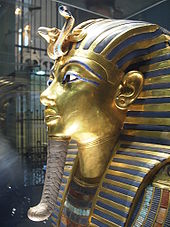
Mask of Tutankhamun‘s mummy featuring a uraeus, from the eighteenth dynasty. Thecobra image of Wadjet with thevulture image of Nekhbetrepresenting of the unification of Lower and Upper Egypt
The Uraeus (/jʊˈriəs/;[1] plural Uraei or Uraeuses; from the Greek οὐραῖος, ouraīos, “on its tail”; from Egyptian jʿr.t (iaret), “rearing cobra”) is the stylized, upright form of an Egyptian cobra (asp, serpent, or snake), used as a symbol ofsovereignty, royalty, deity, and divine authority in ancient Egypt.
The Uraeus is a symbol for the goddess Wadjet, who was one of the earliest Egyptian deities and who often was depicted as a cobra. The center of her cult was in Per-Wadjet, later called Buto by the Greeks.[2] She became the patroness of theNile Delta and the protector of all of Lower Egypt. The pharaohs wore the Uraeus as a head ornament: either with the body of Wadjet atop the head, or as a crown encircling the head; this indicated Wadjet’s protection and reinforced the pharaoh’s claim over the land. In whatever manner that the Uraeus was displayed upon the pharaoh’s head, it was, in effect, part of the pharaoh’s crown. The pharaoh was recognized only by wearing the Uraeus, which conveyed legitimacy to the ruler. There is evidence for this tradition even in the Old Kingdom during the third millennium BCE. Several goddesses associated with or being considered aspects of Wadjet are depicted wearing the Uraeus also.
At the time of the unification of Egypt, the image of Nekhbet, who was represented as a white vulture and held the same position as the patron of Upper Egypt, joined the image of Wadjet on the Uraeus that would encircle the crown of the pharaohs who ruled the unified Egypt. The importance of their separate cults kept them from becoming merged as with so many Egyptian deities. Together, they were known as The Two Ladies, who became the joint protectors and patrons of the unified Egypt.
Later, the pharaohs were seen as a manifestation of the sun god Ra, and so it also was believed that the Uraeus protected them by spitting fire on their enemies from the fiery eye of the goddess. In some mythological works, the eyes of Ra are said to be uraei. Wadjets existed long before the rise of this cult when they originated as the eye of Wadjet as cobra and are the name of the symbols also called the Eye of the Moon, Eye of Hathor, the Eye of Horus, and the Eye of Ra—depending upon the dates of the references to the symbols.
As the Uraeus was seen as a royal symbol, Horus and Set were also depicted wearing the symbol on their crowns. In early mythology, Horus would have been the name given to any king as part of the many titles taken, being identified as the son of the goddess. According to the later mythology of Re, the first Uraeus was said to have been created by the goddess Isis, who formed it from the dust of the earth and the spittle of the then-current sun deity. In this version of the mythology, the Uraeus was the instrument with which Isis gained the throne of Egypt for Osiris. Isis is associated with and may be considered an aspect of Wadjet.
Contents[hide] |
Golden Uraeus of Senusret II
In 1919, after only a half-hour of excavation, the Qufti worker Hosni Ibrahim held in his hands the solid-gold Golden Uraeus of Senusret II. It had been decided to make a (follow-up) complete clearance of the El-Lahun Pyramid’s rooms at Saqqara. The start in the rock-cut offering chamber, leading from the tomb, on the south, immediately revealed in the turnover of the six inches of debris, the Golden Uraeus crown ornament.
Prior to the 1922 find of Tutankhamun’s tomb, this Golden Uraeus was the only ornament ever known to be worn by an entombed pharaoh, and it was thought that it was passed to the next pharaoh.
The Golden Uraeus is of solid gold, 6.7 cm (2.6 in), black eyes of granite, a snake head of deep ultramarine lapis lazuli, the flared cobra hood of dark carnelianinlays, and inlays of turquoise. For mounting on the pharaoh‘s crown, two loops in the rear-supporting tail of the cobra provide the attachment points.[3][4]
Uraeus as a hieroglyph
|
||||||||||||
| Uraeus— Uraeus on Basket Ntr + Cobra in hieroglyphs |
|---|
Besides the Uraeus being used as an ornament for statuary or as an adornment on the pharaoh, it also was used forjewellery and in amulets. However, another important use is as the hieroglyph.
- For Uraeus ornament as a mummy grave example, See: Djedptahiufankh, High Priest of 21st Dynasty, Shoshenq I.
The simplest hieroglyph is the “Cobra” (the Uraeus); however there are subcategories, referring to: a goddess, a priestess, the goddess Menhit, the shrine of the goddess (àter), the goddess Isis, and lastly goddess: (Cobra (Uraeus) at base of deity (ntr)).
The Rosetta Stone uses the plural of the last example, “3 × “god flag” with Cobra at each base of flag”. The story of the Rosetta Stone has the king (the priests of the king) listing his reasons for being honored, and in return, “The Gods and Goddesses (plural)” reward him. The last two-thirds of the Rosetta Stone relates how he will be honored, including erecting the Rosetta Stone, for all to read.
|
|||||
| Uraeus on buildings in hieroglyphs |
|---|
Another example of the hieroglyph usage is as adornments upon the hieroglyph for “shrine”, and also for “buildings”.[5]
[edit]See also
| Wikimedia Commons has media related to: Category:Uraeus |
- Deshret – Red Crown of Lower Egypt
- Hedjet – White Crown of Upper Egypt
- Pschent – Double Crown of Lower & Upper Egypt
- Atef – Hedjet Crown with feathers identified with Osiris
- Khepresh – Blue or War Crown also called Royal Crown
- Nekhbet – Woman or Vulture wearing an Atef Crown
- Serpent symbolism
From Wikipedia, the free encyclopedia
This article is about the Egyptian goddess. For the ancient Egyptian symbol, see Eye of Horus.
|
||
|
w3ḏyt |
|
||
|
cobra+Sun |
|
||
|
ḏt “cobra” |
Wadjet (pron.: /ˈwɑːdˌdʒɛt/ or /ˈwædˌdʒɛt/; Egyptian w3ḏyt, “green one”),[1] known to the Greek world as Uto (pron.: /ˈjuːtoʊ/) or Buto(pron.: /ˈbjuːtoʊ/) among other names, was originally the ancient local goddess of the city of Dep (Buto),[2] which became part of the city that the Egyptians named Per-Wadjet, House of Wadjet, and the Greeks called Buto (Desouk now),[3] a city that was an important site in thePredynastic era of Ancient Egypt and the cultural developments of the Paleolithic. She was said to be the patron and protector of Lower Egypt and upon unification with Upper Egypt, the joint protector and patron of all of Egypt with the “goddess” of Upper Egypt. The image of Wadjet with the sun disk is called the uraeus, and it was the emblem on the crown of the rulers of Lower Egypt. She was also the protector of kings and of women in childbirth.
As the patron goddess, she was associated with the land and depicted as a snake-headed woman or a snake—usually an Egyptian cobra, a venomous snake common to the region; sometimes she was depicted as a woman with two snake heads and, at other times, a snake with a woman’s head. Her oracle was in the renowned temple in Per-Wadjet that was dedicated to her worship and gave the city its name. This oracle may have been the source for the oracular tradition that spread to Greece from Egypt.[4]
The Going Forth of Wadjet was celebrated on December 25 with chants and songs. An annual festival held in the city celebrated Wadjet on April 21. Other important dates for special worship of her were June 21, the Summer Solstice, and March 14. She also was assigned the fifth hour of the fifth day of the moon.
Two images of Wadjet appear on this carved wall in the Hatshepsut Temple at Luxor
Wadjet was closely associated in the Egyptian pantheon with Bast, the fierce goddess depicted as a lioness warrior and protector, as the sun goddess whose eye later became the eye of Horus, the eye of Ra, and as the Lady of Flame. The hieroglyph for her eye is shown below; sometimes two are shown in the sky of religious images. Per-Wadjet also contained a sanctuary of Horus, the child of the sun deity who would be interpreted to represent the pharaoh. Much later, Wadjet became associated with Isis as well as with many other deities.
In the relief shown to the right, which is on the wall of the Hatshepsut Temple at Luxor, there are two images of Wadjet: one of her as the uraeus sun disk with her head through an ankh and another where she precedes a Horus hawk wearing the double crown of united Egypt, representing the pharaoh whom she protects.
|
Contents [hide] |
[edit]Etymology
The name Wadjet[5] is derived from the term for the symbol of her domain, Lower Egypt, the papyrus.[6]
Her name means “papyrus-colored one”,[7][8] as wadj is the ancient Egyptian word for the color green (in reference to the color of the papyrus plant) and the et is an indication of her gender. Its hieroglyphs differ from those of the Green Crown (Red Crown) of Lower Egypt only by the determinative, which in the case of the crown was a picture of the Green Crown[9] and, in the case of the goddess, a rearing cobra.
[edit]Protector of country, pharaohs, and other deities
|
||||||||||||
|
Uraeus – |
Eventually, Wadjet was claimed as the patron goddess and protector of the whole of Lower Egypt and became associated with Nekhbet, depicted as a white vulture, who held the same title in Upper Egypt. When the two parts of Egypt were joined together, there was no merger of the deities as often occurred, both beliefs were retained and became known, euphemistically, as the two ladies,[10] who were the protectors of unified Egypt. After the unification the image of Nekhbet joined Wadjet on the crown, thereafter shown as part of the uraeus.
|
||
|
Wedjat – Eye of Horus |
The ancient Egyptian word Wedjat signifies blue and green. It is also the name for the well known Eye of the Moon,[11] which later became the Eye of Horus and the Eye of Ra as additional sun deities arose. Indeed, in later times, she was often depicted simply as a woman with a snake’s head, or as a woman wearing the uraeus. Theuraeus originally had been her body alone, which wrapped around or was coiled upon the head of the pharaoh or another deity
Depicted as an Egyptian cobra she became confused with Renenutet, whose identity eventually merged with hers. As patron and protector, later Wadjet often was shown coiled upon the head of Ra, who much later became the Egyptian chief deity; in order to act as his protection, this image of her became the uraeus symbol used on the royal crowns as well.
Another early depiction of Wadjet is as a cobra entwined around a papyrus stem, beginning in the Predynastic era (prior to 3100 B.C.) and it is thought to be the first image that shows a snake entwined around a staff symbol. This is a sacred image that appeared repeatedly in the later images and myths of cultures surrounding the Mediterranean Sea, called the caduceus, which may have had separate origins.
Her image also rears up from the staff of the “flag” poles that are used to indicate deities, as seen in the hieroglyph for uraeus above and for goddess in other places.
[edit]Associations with other deities
An interpretation of the Milky Way was that it was the primal snake, Wadjet, the protector of Egypt. In this interpretation she was closely associated with Hathorand other early deities among the various aspects of the great mother goddess, including Mut and Naunet. The association with Hathor brought her son Horus into association also. The cult of Ra absorbed most of Horus’s traits and included the protective eye of Wadjet that had shown her association with Hathor.
When identified as the protector of Ra, who was also a sun deity associated with heat and fire, she was sometimes said to be able to send fire onto those who might attack, just as the cobra spits poison into the eyes of its enemies.[12] In this role she was called the Lady of Flame.
Wadjet as Wadjet-Bast, depicted as the body of a woman with a lioness head, wearing the uraeus
She later became identified with the war goddess of Lower Egypt, Bast, who acted as another figure symbolic of the nation, consequently becoming Wadjet-Bast. In this role, since Bast was a lioness, Wadjet-Bast was often depicted with a lioness head.
After Lower Egypt had been conquered by Upper Egypt and they were unified, the lioness goddess of Upper Egypt,Sekhmet, was seen as the more powerful of the two warrior goddesses. It was Sekhmet who was seen as theAvenger of Wrongs, and the Scarlet Lady, a reference to blood, as the one with bloodlust. She is depicted with the solar disk and Wadjet, however.
Eventually, Wadjet’s position as patron led to her being identified as the more powerful goddess Mut, whose cult had come to the fore in conjunction with rise of the cult of Amun, and eventually being absorbed into her as the Mut-Wadjet-Bast triad.
When the pairing of deities occurred in later Egyptian myths, since she was linked to the land, after the unification of Lower and Upper Egypt she came to be thought of as the wife of Hapy, a deity of the Nile, which flowed through the land.[13]
Wadjet is not to be confused with the Egyptian demon Apep, who is also represented as a snake in Egyptian mythology.
Snakes in mythology
From Wikipedia, the free encyclopedia
Snakes were central to many mythologies because of their perceived quality of being both familiar and exotic. The behaviour of snakes and their facial features (e.g. the unblinking, lidless eyes) seemed to imply that they were intelligent, that they lived by reason and not instinct, and yet their thought-processes were as alien to humans as their ways of movement.
In some cultures snakes were fertility symbols, for example the Hopi people of North America performed an annual snake dance to celebrate the union of Snake Youth (a Sky spirit) and Snake Girl (an Underworld spirit) and to renew fertility of Nature. During the dance, live snakes were handled and at the end of the dance the snakes were released into the fields to guarantee good crops. “The snake dance is a prayer to the spirits of the clouds, the thunder and the lightning, that the rain may fall on the growing crops..”[1] In other cultures snakes symbolised the umbilical cord, joining all humans to Mother Earth. The Great Goddess often had snakes as her familiars – sometimes twining around her sacred staff, as in ancient Crete – and they were worshipped as guardians of hermysteries of birth and regeneration.[2]
[edit]Snakes and immortality
Some cultures regarded snakes as immortal because they appeared to be reincarnated from themselves when they sloughed their skins. Snakes were often also associated with immortality because they were observed biting their tails to form a circle and when they coiled they formed spirals. Both circles and spirals were seen as symbols of eternity. The circle was particularly important to Dahomeyan myth where the snake-god Danh circled the world like a belt, corsetting it and preventing it from flying apart in splinters. In Egyptian myth, the state of existence before creation was symbolised as Amduat, a many-coiled serpent from which Ra the Sun and all of creation arose, returning each night and being reborn every morning. Also, the snake biting its tail symbolised the sea as the eternal ring which enclosed the world. In Egypt the snake has healing abilities. Hymns and offerings were made to it since it was believed that the Goddess could manifest through the snake. “In a hymn to the goddess Mertseger, a workman on the Necropolis of Thebes relates how the goddess came to him in the form of a snake to heal his illness (Bunn 1967:617).”[3]
In the Sumerian culture snakes were also very important as a healing symbol: ” Hammurabi’s Law Code (c. 1700 BC) the god Ninazu is identified as the patron of healing, and his son, Ningishzida, is depicted with a serpent and staff symbol (Bunn 1967:618)”
[edit]Snakes and creation myths
Snakes were a common feature of many creation myths, for example many people in Africa and Australia had myths about a Rainbow Snake, which was eitherMother Earth herself giving birth to all animals or a water-god whose writhings created rivers, creeks and oceans. In ancient Indian myth, the drought-serpentAhi or Vritra swallowed the primordial ocean and did not release all created beings until Indra split the serpent’s stomach with a thunderbolt. In another myth, the protector Vishnu slept on the coils of the world-serpent Shesha (or “Ananta the endless”;). Shesha in turn was supported on Kurma and when Kurma moved, Shesha stirred and yawned and the gaping of its jaws caused earthquakes.[4]
In Chinese mythology, the woman-headed snake Nüwa made the first humans. She made humans one at the time with clay. “Delighted, she made another figure, and another and another, and each came to live in the same way. Day in and day out Nǚwā amused herself making mud figures and watching them come to life.”[5] To conserve her energy, she dipped a rope in clay and flicked it so blobs of clay landed everywhere; each blob of clay became an individual human. The first humans of hers became high-class, but second ones became low-class.
Greek cosmological myths tell of how Ophion the snake incubated the primordial egg from which all created things were born.
The classical symbol of the Ouroboros depicts a snake in the act of eating its own tail. This symbol has many interpretations, one of which is the snake representing cyclical nature of life and death, life feeding on itself in the act of creation.
[edit]Snakes and the underworld
Snakes were regularly regarded as guardians of the Underworld or messengers between the Upper and Lower worlds because they lived in cracks and holes in the ground. The Gorgons of Greek myth were snake-women (a common hybrid) whose gaze would turn flesh into stone, the most famous of them beingMedusa.[6] nagas, “the demon cobra”[7] and naginis were human-headed snakes whose kings and queens who lived in jewel-encrusted underground or underwater paradises and who were perpetually at war with Garuda the Sun-bird.In Egyptian myth, every morning the serpent Aapep (symbolising chaos) attacked the Sunship (symbolising order). Aapep would try to engulf the ship and the sky was drenched red at dawn and dusk with its blood as the Sun defeated it.[8]
In Nordic myth, evil was symbolised by the serpent (actually a dragon) Nidhogg (the ‘Dread Biter’) who coiled around one of the three roots of Yggdrasil the Tree of Life, and tried to choke or gnaw the life from it. “Here there is and evil dragon names Nidhogg that gnaws constantly at the root, striving to destroy Yggdrasil” [9] In ancient Slavic paganism a deity by the name of Veles presided over the underworld. He is almost always portrayed as a serpent or dragon depending on the particular myth. The underworld was part of a mythical world tree. The roots of this tree (usually growing in water) were guarded by Volos the serpent god.
The idea of snake-people living below the Earth was prominent in American myth. The Aztec underworld, Mictlan was protected by python-trees, a gigantic alligator and a snake, all of which spirits had to evade by physical ducking and weaving or cunning, before they could start the journey towards immortality. InNorth America, the Brule Sioux people told of three brothers transformed into rattlesnakes which permanently helped and guided their human relatives.
The Pomo people told of a woman who married a rattlesnake-prince and gave birth to four snake-children who freely moved between the two worlds of their parents. The Hopi people told of a young man who ventured into the underworld and married a snake-princess. Amongst the Navajo people is a tale of Glispa, a girl returned with magical healing lore after spending two years with the Snake People by the Lake of Emergence in the underworld.[10]
[edit]Snakes and water
Snakes were also commonly associated with water especially myths about the primordial ocean being formed of a huge coiled snake as in Ahi/Vritra in early Indian myth and Jormungand in Nordic myth.[11] Sea monsters lived in every ocean from the seven-headed crocodile-serpent Leviathan of Hebrew myth to the sea-god Koloowisi of the Zuni people of North America and the Greek monster Scylla with twelve snake-necks. In some cultures, eels (which spend their early lives in freshwater before returning to the sea as adults) were regarded as magical creatures.
Rivers and lakes often had snake-gods or snake-guardians including Untekhi the fearsome water-spirit of the Missouri River. Until recently, some northern European communities held well dressing ceremonies to appease the snake-spirits which lived in village wells and told legends of saints defeating malevolent lake-snakes e.g. Saint George killing a maiden-devouring serpent or Saint Columba lecturing the Loch Ness Monster which then stopped eating humans and became shy of human visitors.
Carved stones depicting a seven-headed cobra are commonly found near the sluices of the ancient irrigation tanks in Sri Lanka; these are believed to have been placed as guardians of the water.
[edit]Snake-gods
The anthropomorphic basis of many myth-systems meant snake-gods were rarely depicted solely as snakes. Exceptions to this were the Fijian creator-god Ndengei, the dozen creator-gods of the Solomon Islands (each with different responsibilities), the Aztec Mother Goddess Coatlicue, and the Voodoo snake-spirits Damballa, Simbi and Petro. Snake-gods were more often portrayed as hybrids or shape-shifters; for example, North American snake-spirits could change between human and serpentine forms whilst keeping the characteristics of both. Likewise, the Korean snake goddess Eobshin was portrayed as a black snake that had human ears.
The most important American snake-god was the Aztec spirit of intelligence and the wind, Quetzalcoatl (“Plumed Serpent”), who was balanced by the evil spirit of sacrifice, the Serpent of Obsidian Knives which was one of the four pillars supporting the sky. In each case, the association with snakes was based on imagery rather than snake-like qualities. The Mayan sky-goddess was a common attribute. However, in her case, the snakes leaned into her ears and whispered the secrets of the universe (i.e. the secrets of herself). In Indian myth, Shiva had a cobra coiled on his head and another at rest on his shoulder, ready to strike his enemies. Egyptian myth has had several snake-gods, from the ‘coiled one’ Mehen who assisted Ra in fighting Aapep every day to the two-headed Nehebkau who guarded the underworld. In Korean mythology, the goddess Eobshin was the snake goddess of wealth, as snakes ate rats and mice that gnawed on the crops.
[edit]Snakes and wisdom
Snakes were associated with wisdom in many mythologies, perhaps due to the appearance of pondering their actions as they prepare to strike, which was copied by medicine men in the build-up to prophecy in parts of West Africa. Usually the wisdom of snakes was regarded as ancient and beneficial towards humans but sometimes it could be directed against humans. In East Asia snake-dragons watched over good harvests, rain, fertility and the cycle of the seasons, whilst in ancient Greece and India, snakes were considered to be lucky and snake-amulets were used as talismans against evil.
Tiresias gained a dual male-female nature and an insight into the supernatural world when he killed two snakes which were coupling in the woods.
The Biblical story of the fall of man tells of how Adam and Eve were deceived into disobeying God by a snake (identified as Satan by both Paul and John in II Corinthians and Revelation, respectively). In the story, the snake convinces Eve to eat fruit from the Tree of Knowledge of Good and Evil, which she then convinces Adam to do as well. As a result, God banishes Adam and Eve from the garden and curses the snake.
In the state of Kerala, India, snake shrines occupy most households. Snakes were called upon by the creator of Kerala, Parasurama, to make the saline land fertile. The Mannarasala Shri Nagaraja Temple is one of the main centres of worship. The presiding deity here is Nagaraja – a five-headed snake god born to human parents as a blessing for their caretaking of snakes during a fire. It is believed that Nagaraja left his earthly life and took Samadhi but still resides in a chamber of the temple.
[edit]Snakes and healing
Healing and snakes were associated in ancient Greek myth with Aesculapius, whose snake-familiars would crawl across the bodies of sick people asleep at night in his shrines and lick them back to health.
In northern Europe and West Asia, snakes were associated with healing whilst in parts of South Asia, snakes are regarded as possessing aphrodisiac qualities. Greek myth held that people could acquire second hearing and second sight if their ears or eyes were licked by a snake.
Rico Cortes
3 thoughts on “Introduction of the gods of Egypt important for the study of Exodus (ANET)”
Leave a Comment Cancel Reply
You must be logged in to post a comment.



![X1 [t] t](http://bits.wikimedia.org/static-1.21wmf6/extensions/wikihiero/img/hiero_X1.png)
![D21 [r] r](http://bits.wikimedia.org/static-1.21wmf6/extensions/wikihiero/img/hiero_D21.png)



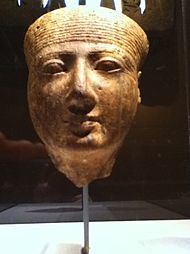








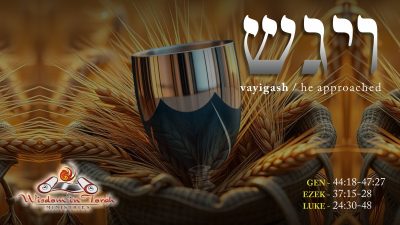
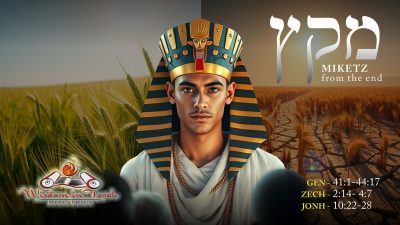
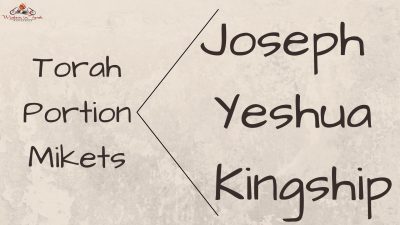


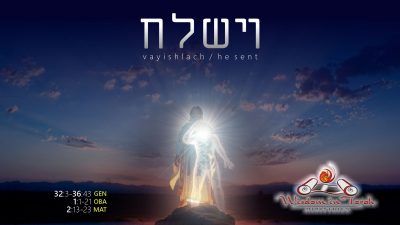
Quite the business here; all the temples, amulets, idols, animal sacrifice, ritual services…. But soon, every knee will bow to YHVH, The Most High!
Sorry the videos are not working.
Rico,
The videos are working.